sustainable design
See our blog for new projects, announcements, and all things TMS Architects & Interiors.Traditional Meets Sustainable – Part 2
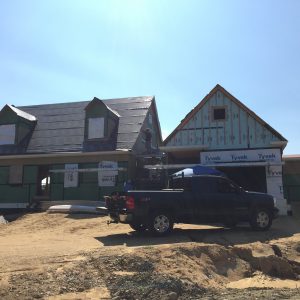
A few months ago, we shared the beginning stages of a sustainable Maine home in progress with you. This homeowner desired to implement practical, sustainable elements within a traditional, Cape Cod style home. In our last post, we walked you through our process from laying the foundation to completing the basic structure of the home. Today, we’ll give you a detailed look inside so you can see how we’ve insulated the house for maximum efficiency.
 Read More
Read More
Traditional Meets Sustainable – Part 1
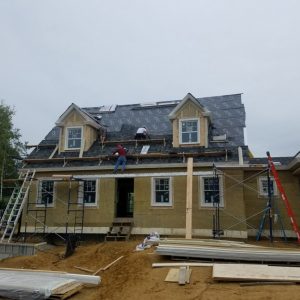
When you read the words “Maine home,” we bet there’s plenty that comes to mind: rolling hills, peaceful views, and classic New England style. Sustainability and efficiency, however, are probably not at the top of that list. In the past, prioritizing sustainability would dictate the overall design of a home, meaning styles like a classic Cape house would be out of the question. Today, however, it’s easier than ever to incorporate green features into traditional architecture… of course, having years of experience with both like we do doesn’t hurt either.
In this series of blog posts, we’ll be documenting the progress of a Maine home that features both classic design elements and a forward-thinking approach for both the current homeowner and the generations to come. We hope you enjoy following along!
 Read More
Read More
Sustainability & Substance: Kitchen Design
Every house has rooms that live as the center of excitement: the living room, with its vibrant fireplace and sweeping view. The master suite, with its sumptuous comfort and unique textures. Even the bathroom, with its endless possibilities for relaxation and revitalization. All of these fun, enjoyable spaces can soak up all gleams of glamour in redesign and renovation; creative instincts lend themselves to things based in desire rather than pragmatism. The same is true when rebuilding for sustainability: water-saving fixtures in the bathroom, solar heating for the bedroom, double-sealed windows for the living room. Amongst all of these places – unless you’re a chef, of course – the kitchen is forgotten until the cupboards are simply too heinous to be looked at anymore. But before that moment hits, the kitchen’s renovation lives as the frightening undertaking, the one too overwhelming to even consider unless absolutely necessary. To do so in the pursuit of environmentally-friendly living may seem even more exhausting. But with just a few adjustments, the true heart and gathering place of your home can become one that exists sustainably for years to come.
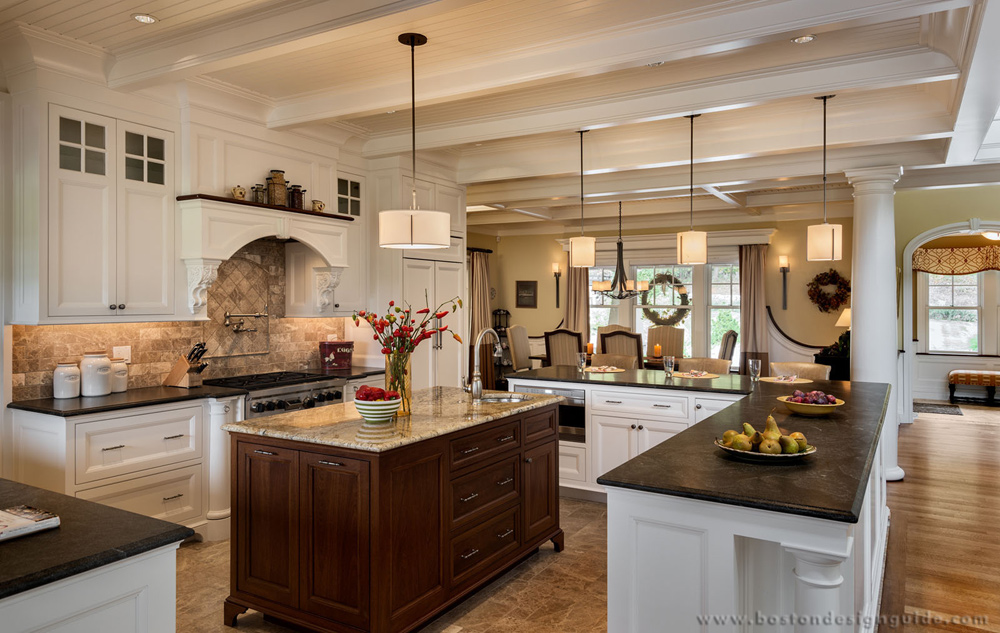
Design by TMS Architects
Appliances are generally first on any hit list for a kitchen. It’s the thing people dream about when house hunting, and it’s the thing least likely to compromise in a design. Naturally, sustainable design calls for appliances designed sustainably, but it can be far simpler than that. Consider the needs of your home in every sense: how much cooking do you do? How much space do you have? How much food do you really need for your family? Scale your appliances accordingly – there is no point in paying an electric bill to cool a refrigerator that’s always half empty, or one filled with food that’s partially forgotten until thrown away. From washing machines to dishwashers to fridges, most European homes have compact machines for this exact reason, while most homes in the United States buy machines designed at an unnecessary size. Using energy-efficient appliances can be brilliant, but they need to be used efficiently, too.
Design by TMS Architects
Custom cupboards always add an effortless elegance to any kitchen. Lines masterfully intended for your own space, finishes artfully created for your own taste; with such specific design, the room can’t help but become a thing of comforting beauty. Of course, there’s an additional pleasure in hiring local craftsmen: getting to experience their process, support their work, and engage in the community. But by simply sourcing local timber for your project, you can elevate a gorgeous design with wonderful execution to being a sustainable one.
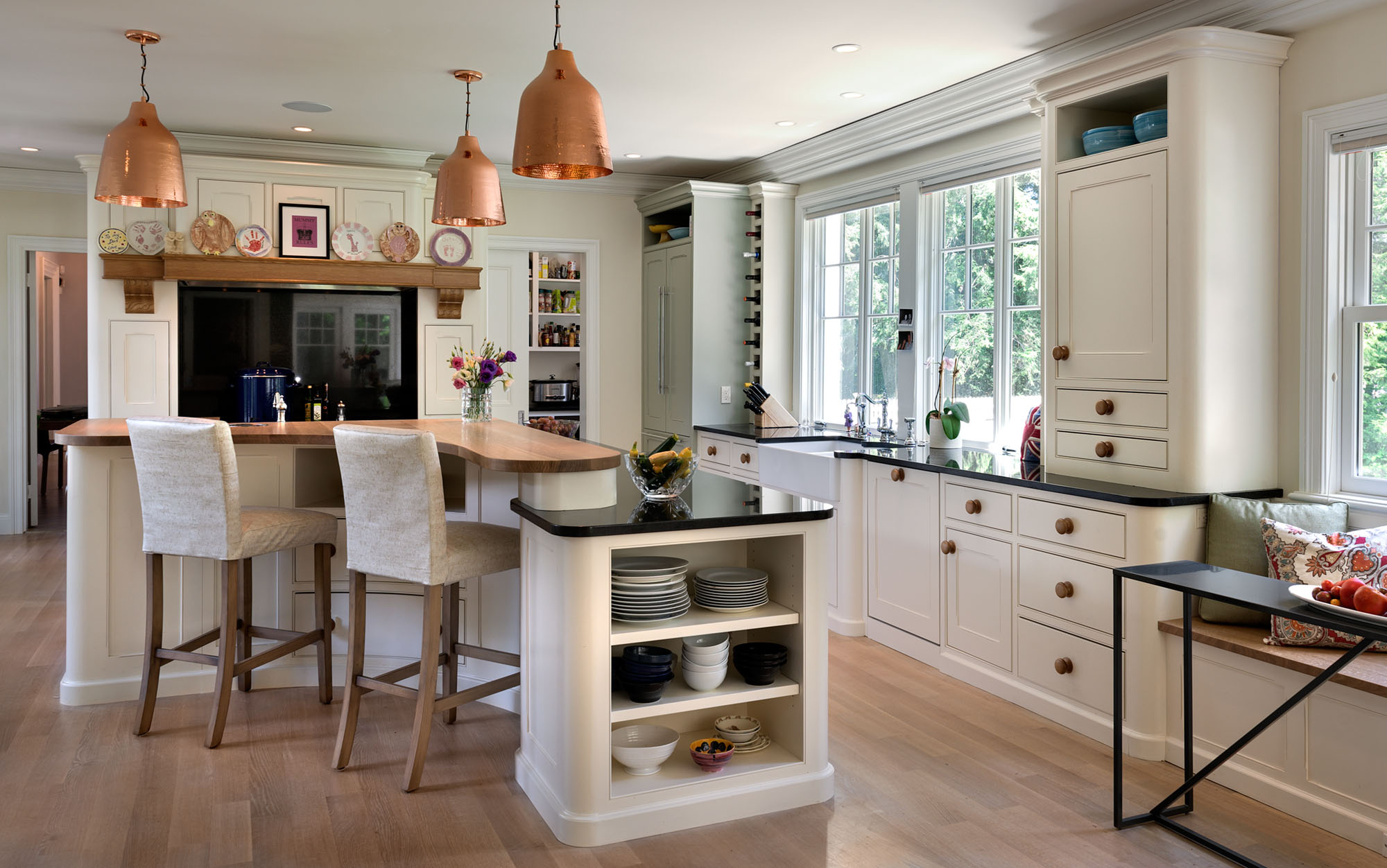
Design by TMS Architects
Much like appliances can be energy efficient, but also just efficiently used less, the primary concept of sustainable design is finding ways to allow less to do more. One of the simplest is also one of the most satisfying kitchen aesthetics throughout history: reflective surfaces. Shining whites, sparkling stainless steel, glittering marble; their luxurious glows aren’t solely about appearance. They’re popular in kitchens for their clean lines and sun-soaked appearance, but like most things, they serve a dual purpose. Those shining, sparkling, glittering tendencies also allow less electricity to be used in lighting a space by accentuating its natural light – a trick your great-great-great grandparents likely used, and one well worth stealing when designing a lovely, eco-friendly home.
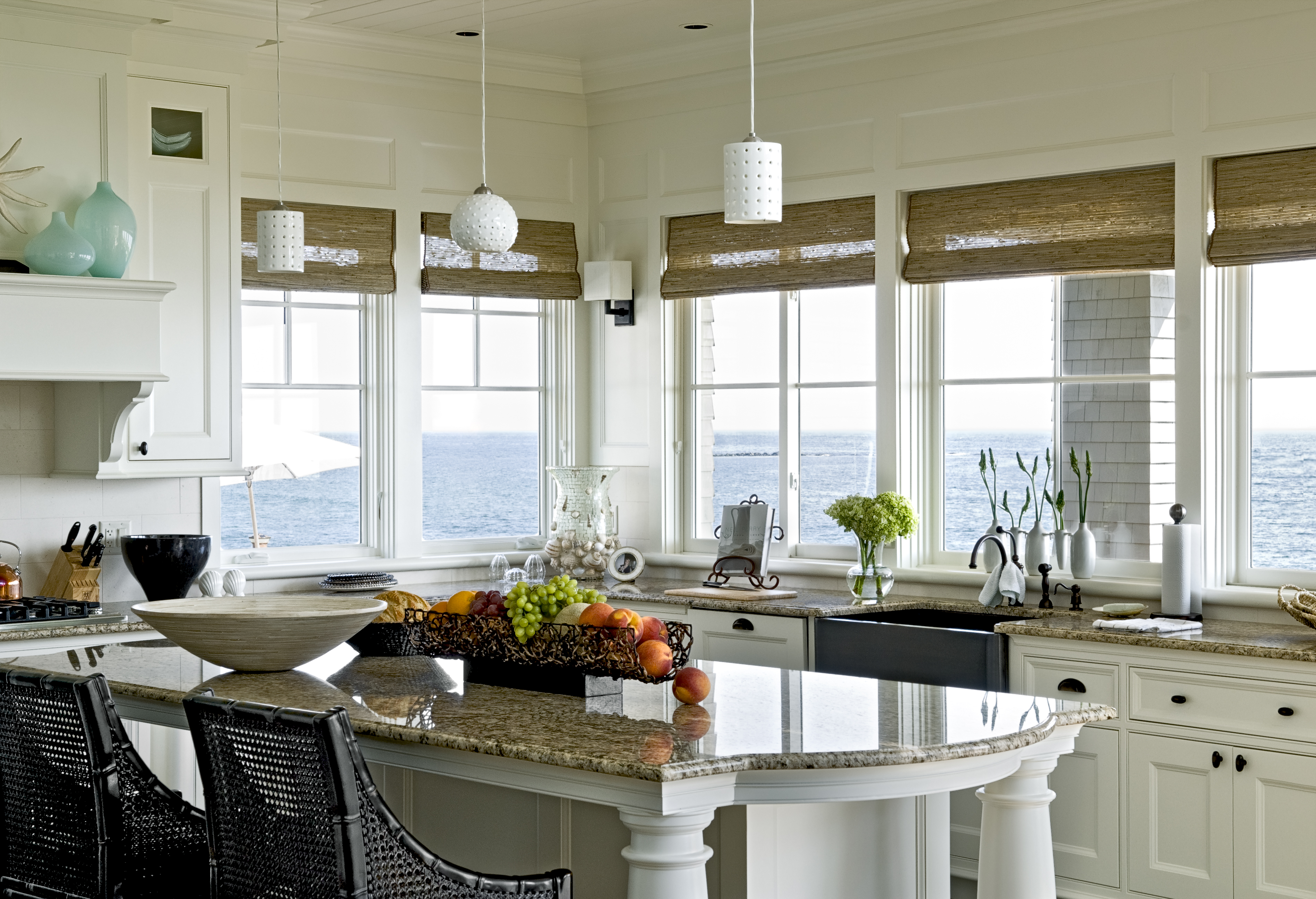
Design by TMS Architects
There’s reducing, there’s reusing, and of course – there’s recycling. But this isn’t just about plastic bottles. Some of the most divine materials in contemporary interior design are currently made from recycled goods from textiles to floorboards, countertops to faucets. If such literal recycling seems too much of an overhaul for the renovation you had in mind, a quick visit to your favorite local antique shop could reveal another kind of recycling in the form of fabulous fixtures and to-die-for details.

Design by TMS Architects
If the hope is simply to renovate your kitchen in a stunning fashion, that effort itself can be done sustainably. Rather than replacing everything, examine what can be refurbished, reshaped, and redone: in essence, what can be salvaged. The original structure of your kitchen might be a work of art, merely buried in poor glosses and bad paneling. Even its original features might have marvelous facets, with more character than any modern cabinet or kitchen island could hope to have – if only you have the patience to strip away that paint and oil those hinges.
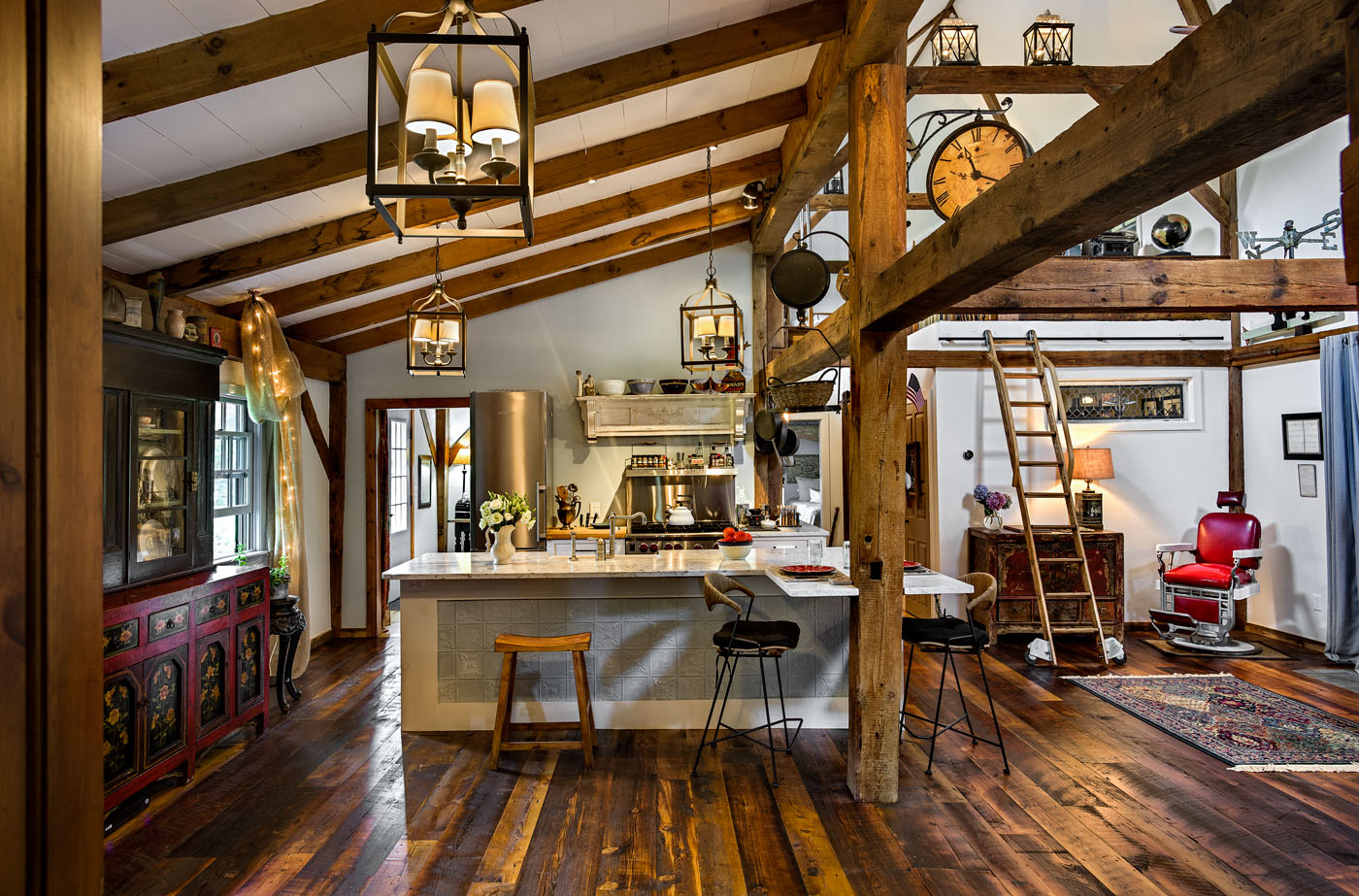
Design by TMS Architects
Any renovation or construction is overwhelming, in any home. A renovation that involves putting the place that makes your food out of commission may feel impossible. But whether you’re renovating the ancestral home or building the one that will last for generations, the best way to preserve its potential from present to future is to give it a sustainable foundation and environmentally-friendly structure. While its pragmatic purpose may often leave it shuffled to the bottom of your design dreams, revitalizing your kitchen is an investment in the real center and showstopper of your house to create a home that will last for every one of all those years to come.
Small Changes, Large Impact
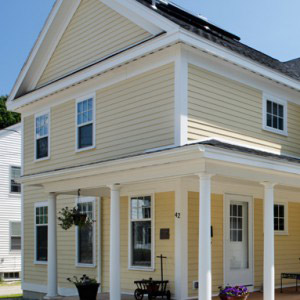
Only a few years ago, creating an environmentally sustainable home was the goal of a select few, ranging from a handful of stylish fad fixtures, to shaping the entire aesthetic of a house. But with the remarkable recent advances in design, science, and culture, anyone now building a house has no reason to forego the incorporation of green elements — and the same is especially true of simple, new additions to an already existing home. Whether you’re building a house from scratch or revamping your homestead, sustainability can be an effortless and rewarding cornerstone of your home that pays dividends for decades to come.
 Read More
Read More
